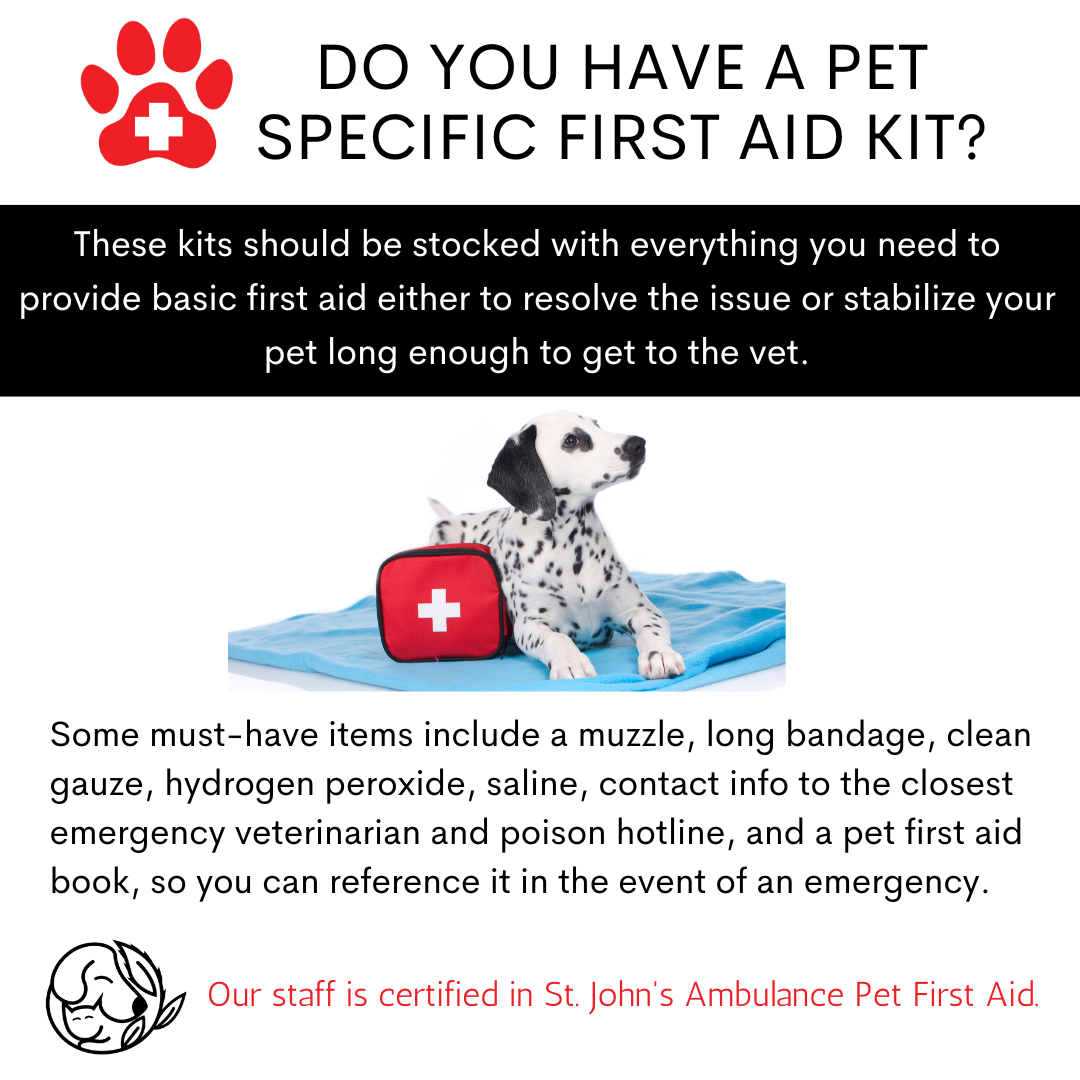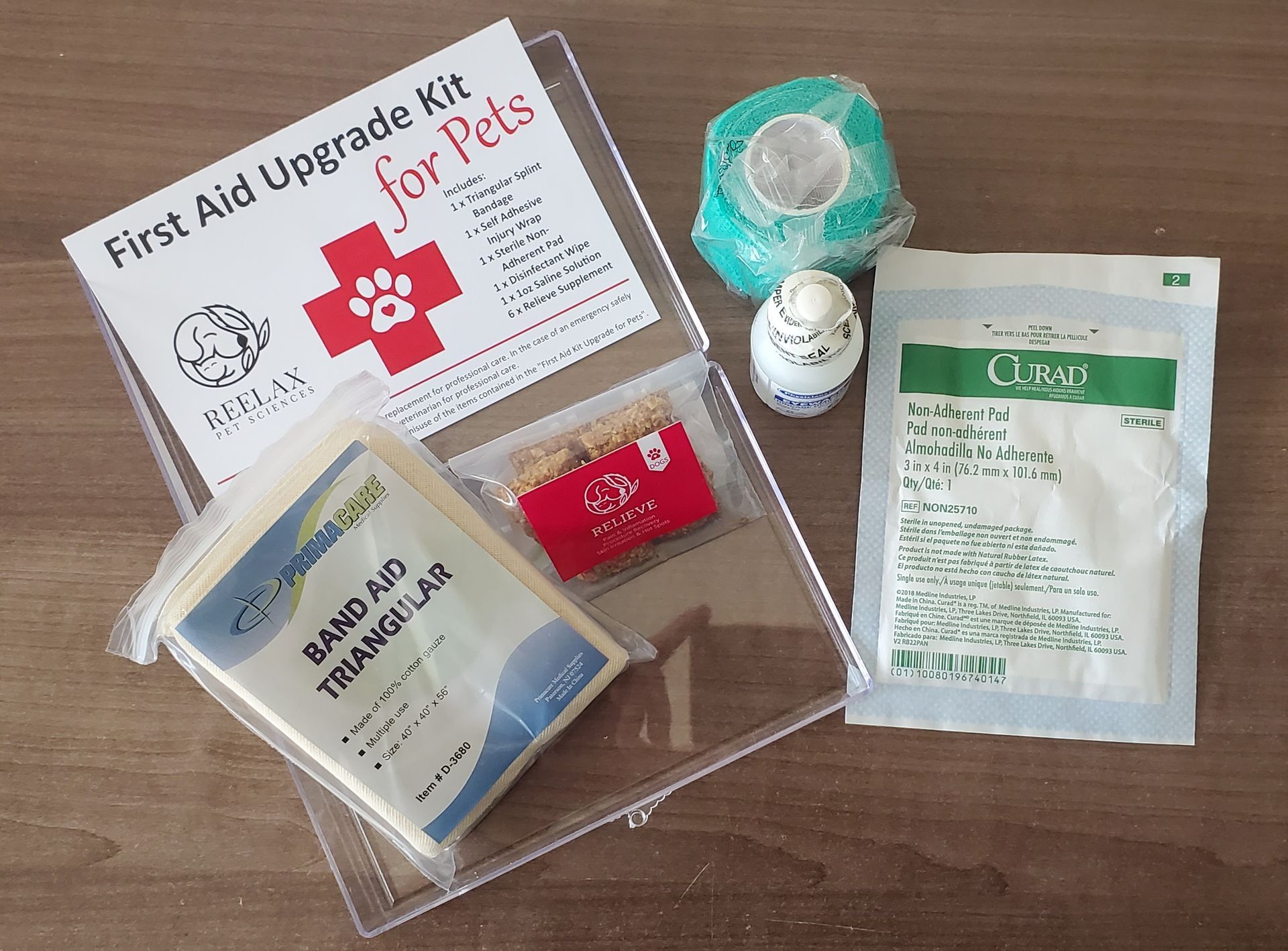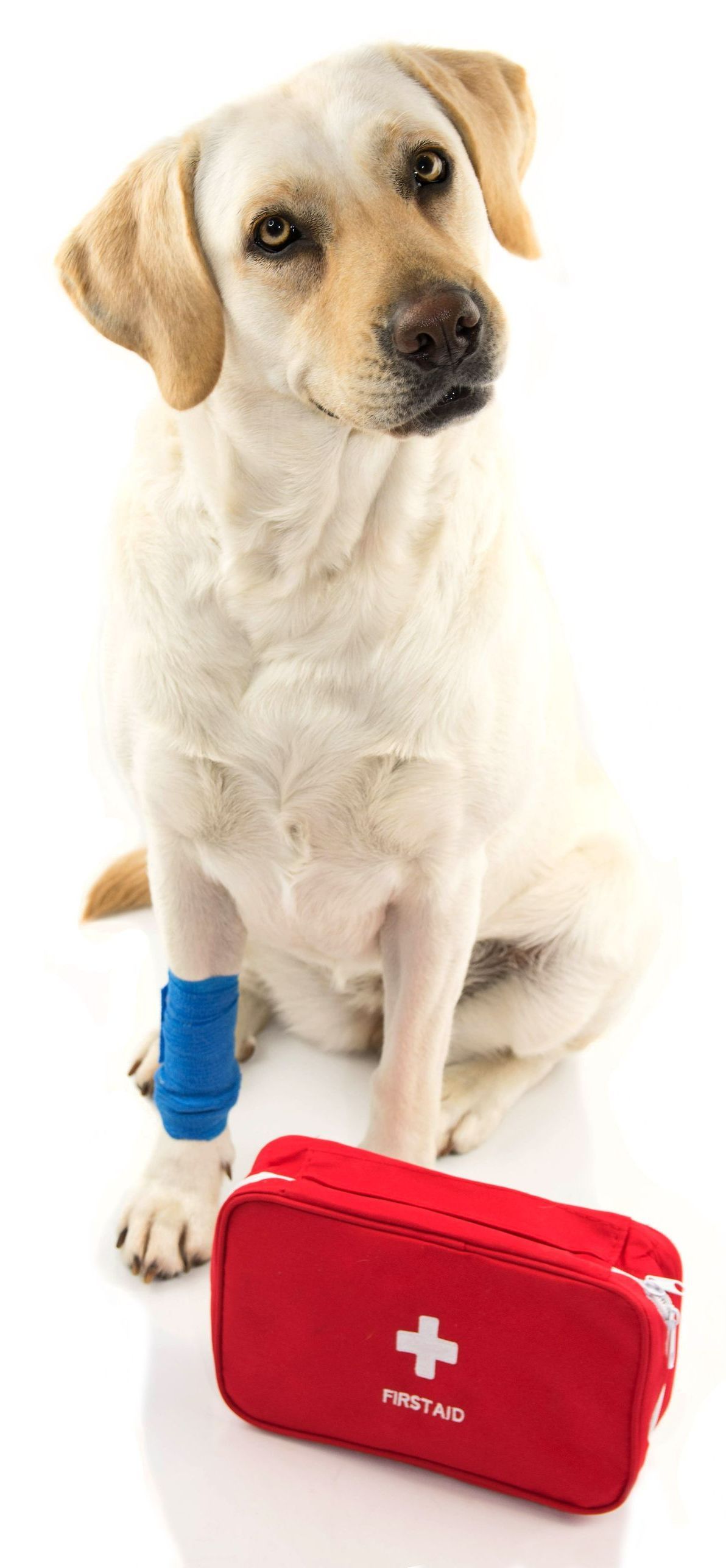
Are you prepared for a
PET EMERGENCY?
Do you love adventuring with your pet?
Does your pet socialize with other pets?
Are you familiar with the signs of bloat?
Check out our TIPS & TRICKS about Pet First Aid below!
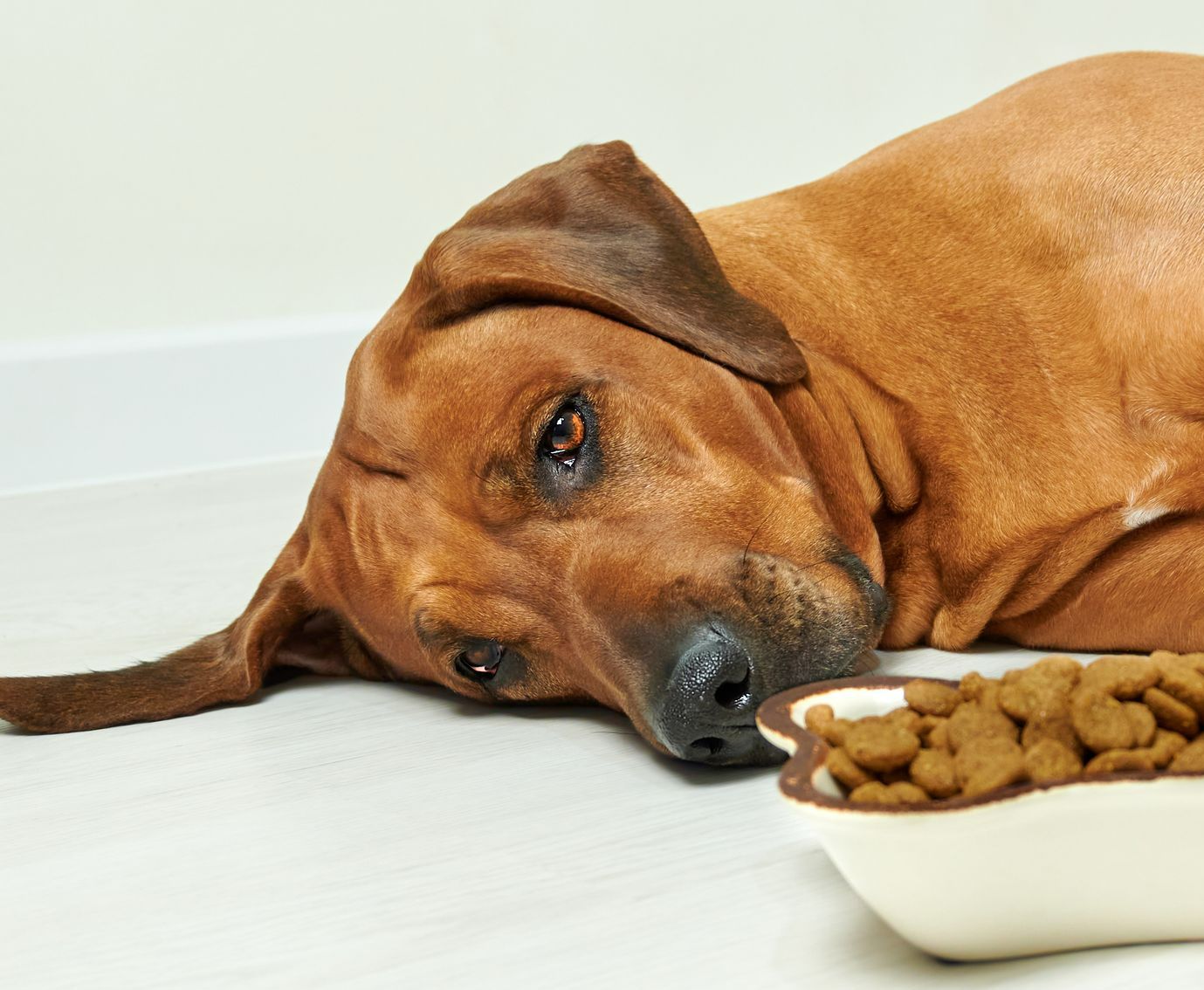
Beat the BLOAT
Pet bloat, also known as gastric dilatation-volvulus (GDV), is a condition that primarily affects larger breeds of dogs, but can also occur in smaller ones. It occurs when a dog's stomach fills with gas, fluid, or food, causing it to expand and twist. This can lead to a life-threatening situation, so recognizing the symptoms early is crucial.
Watch out for signs like:
- a bloated abdomen
- restlessness
- unsuccessful atempts to vomit
- and signs of distress
If you notice any of these, don't hesitate! Seek veterinary assistance immediately, as time is of the essence.
Preventing bloat is all about making thoughtful choices for your fur baby.
- Feed them smaller, more frequent meals, rather than one big meal
- Avoid vigorous exercise right after eating.
- Try using raised food bowls and discourage rapid eating.
Let's keep our pets happy and healthy by staying informed and taking preventitive measures. By being proactive and knowledgeable, we can ensure our four-legged friends lead a life free from bloat and full of joyous tail-wagging adventures!
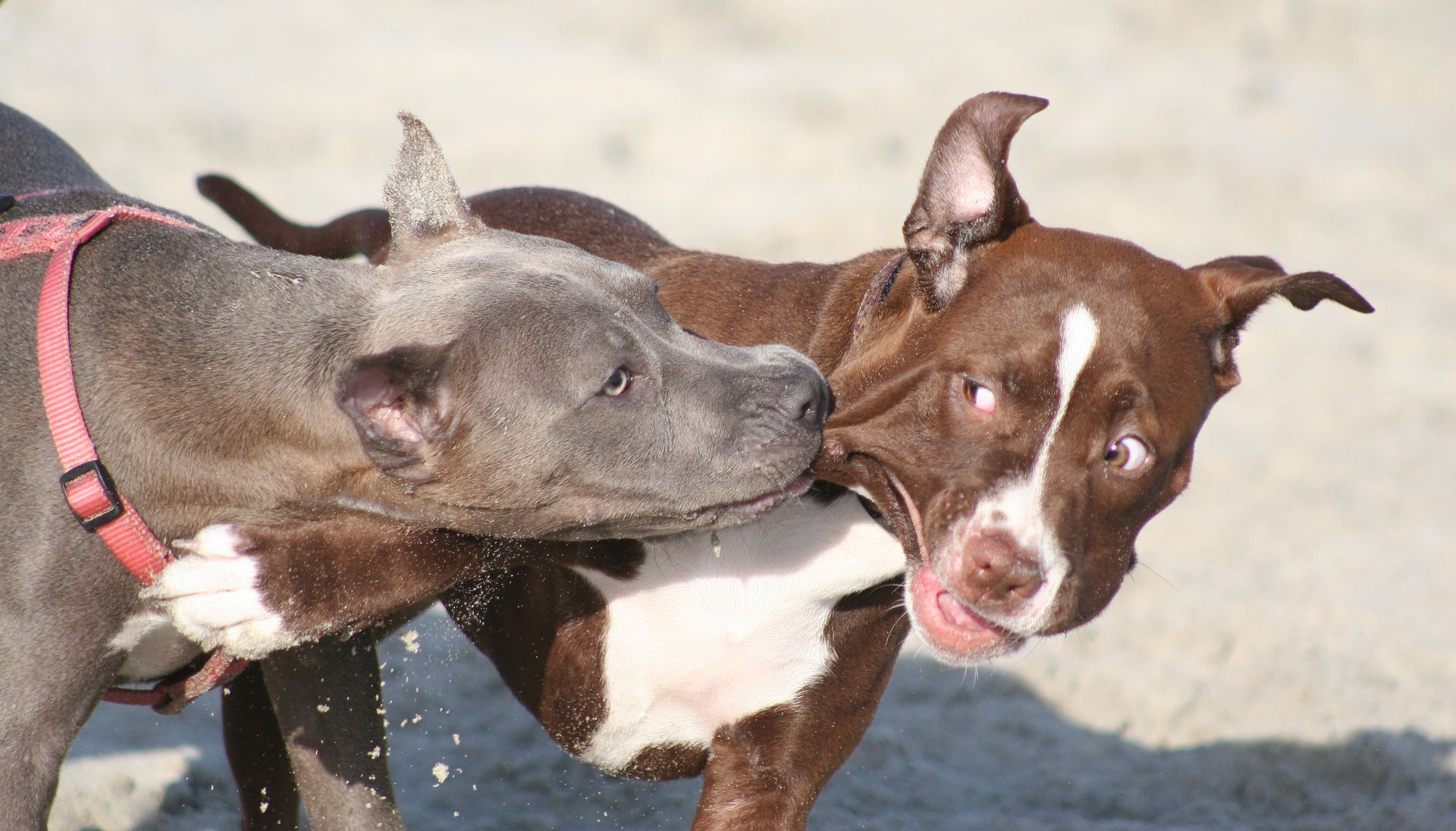
What it takes to stay safe
Whether you're a seasoned pet parent or a new fur baby enthusiast, knowing how to handle fights and bites can be crucial in ensuring your furry friend's well-being.
Here are some tips and tricks
to help you navigate these situations like a pro!
1. Stay Calm, Stay Safe: The first rule of thumb is to remain calm. Pets can sense our emotions, so projecting a composed and reassuring demeanor will help keep them at ease. Always prioritize your safety, as an anxious or aggressive pet may inadvertently cause harm during the situation.
2. Create a Safe Environment: If you're dealing with a fight between pets, separate them immediately. Use a physical barrier like a baby gate or a leash to avoid getting in the middle of the fray yourself.
3. Avoid Panic Biting: A pet in pain or distress might bite out of fear. Be cautious while providing first aid and use a muzzle or improvise one with a bandage to protect yourself if necessary.
4. Assess the Injury: Check for wounds, swelling, or bleeding caused by bites. If there's a severe injury, seek veterinary care promptly. For minor wounds, gently clean the area with mild soap and water, and apply a pet-safe antiseptic.
5. Apply Pressure: If there's bleeding from a bite wound, apply gentle pressure with a clean cloth or gauze to control it. Remember to reward your pet's cooperation with treats and positive reinforcement.
6. Seek Professional Help: Even if the bite seems minor, keep a close eye on it for signs of infection. If it worsens or your pet shows signs of distress, consult your veterinarian.
Remember, pet first aid is about being prepared and proactive. Take a pet first aid course to gain more comprehensive knowledge and confidence. By being well-informed, you can be your pet's superhero in times of need!
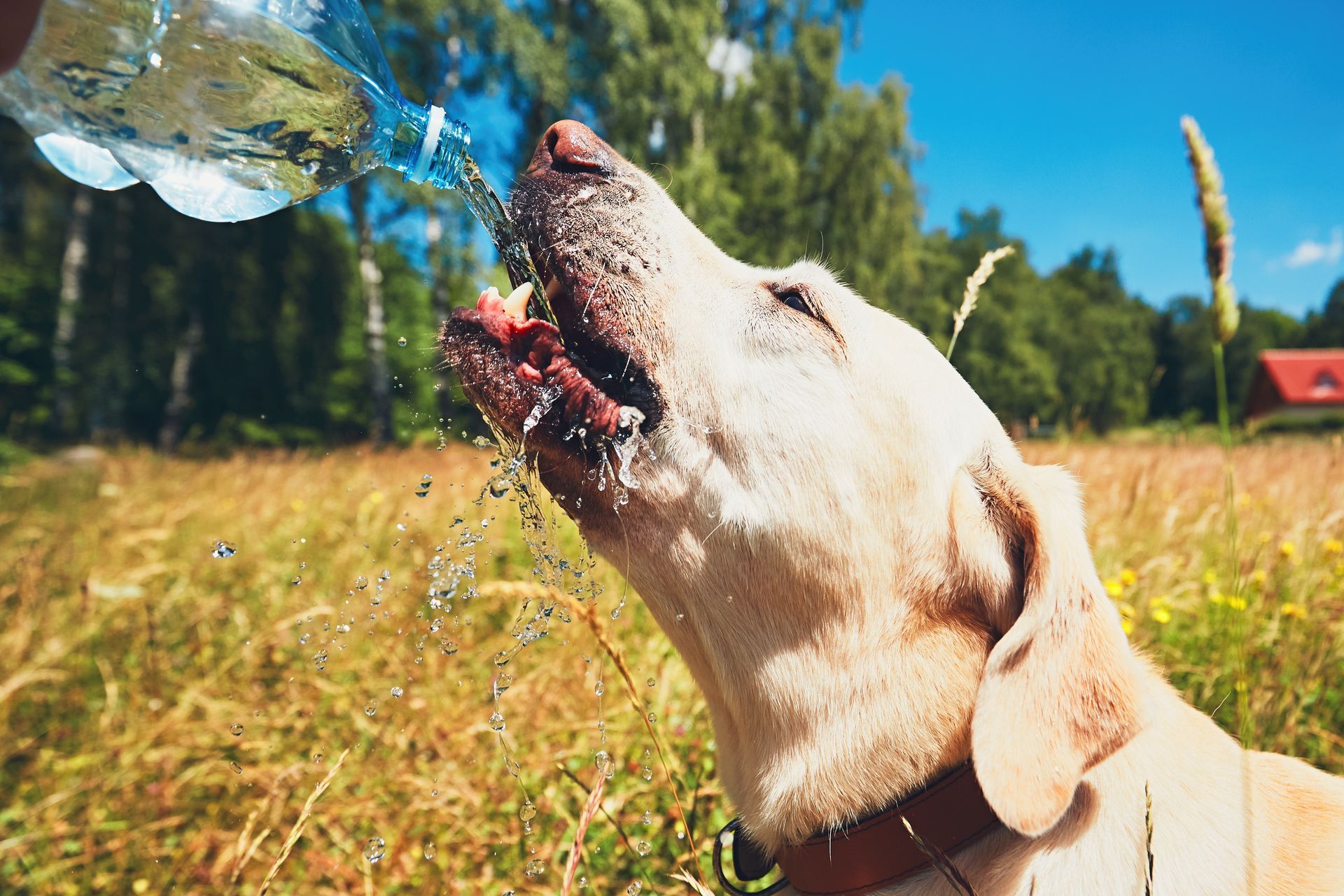
The importance of staying COOL
Dehydration occurs when our pets lose more fluids than they consume, leading to potential health risks. Look out for warning signs like dry gums, sunken eyes, lethargy, and excessive panting. But fear not, preventing dehydration is simple!
Top Tips and Tricks for Staying Cool this Summer:
1. Ensure your furry friends have constant access to fresh, clean water, especially during hot weather or after vigorous exercise.
2. On those sunny days, plan walks during the cooler hours and bring along a water bottle and a portable pet bowl. Hydration is a team effort!
3. Not all pets drink as much water as they should, so consider adding wet food to their diet to boost fluid intake.
4. Freeze treats with water to create refreshing, hydrating snacks. Make it fun!
Remember, older pets and those with certain health conditions are more prone to dehydration. Regular check-ups with the vet will keep your fur babies in tip-top shape.
With these tips and tricks, you're well on your way to keeping your furry friends happy, healthy, and hydrated. Remember, a well-hydrated pet is a happy pet!
